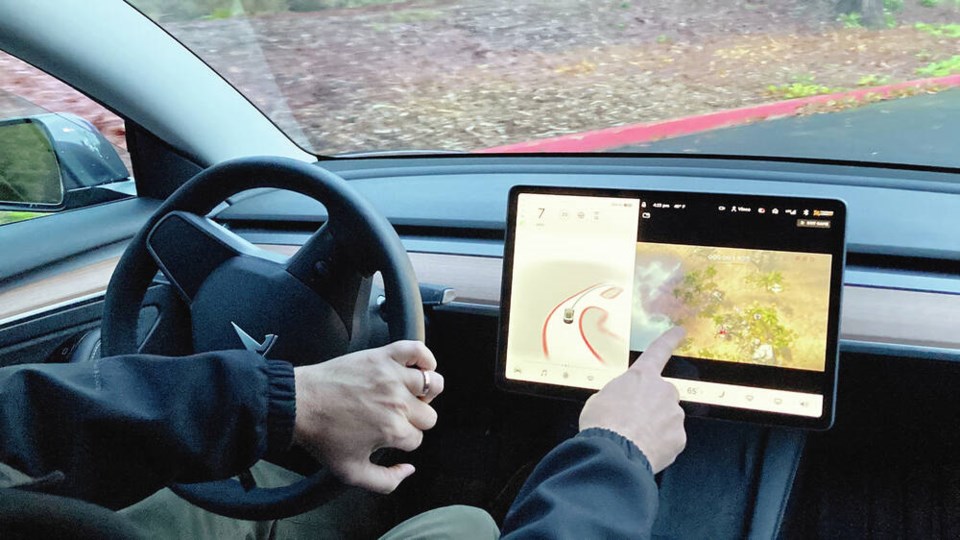We often tout the ability to multi-task as a strength. I’m sure the resumes of most job-seekers today use the phrase “ability to multi-task” liberally.
The problem is that it actually isn’t a strength at all — and in terms of driver safety, it’s probably one of the worst characteristics you might have while behind the wheel.
That’s because our brains are misleading us in these moments. According to Kendra Cherry, an author and educator, multi-tasking is not about successfully doing a number of things at once — rather, it’s about constantly shifting attention and focus to a series of tasks. The result is reduced comprehension, attention and overall performance.
So imagine hopping into your car and telling your passenger: “We’re late but I’ve got some other things to do while we’re en route. My comprehension about what’s happening on the road will be reduced. I can’t pay 100 per cent attention to hazards and my overall driving performance will be affected.” As a passenger, I’d be out the door at “reduced comprehension.”
According to Cherry, in the workplace context, multi-tasking actually slows us down, impairs executive function — the control and management part of the brain — and causes mistakes. Multi-taskers actually take more time to complete work than those who focus solely on one task at a time.
For drivers, multi-tasking is the cousin of distraction. When the brain receives too many signals, it stacks those inputs into a sequential order. You can only retain those pieces of information for very short periods of time if you are constantly interrupting yourself with new information or tasks.
In real life driving, you are actually choosing to prioritize a menial task like changing tunes over those pedestrians crossing the road right in front of you.
I’ve experienced this myself. Way back when it was about trying to stay in my lane while removing the hamburger from the bag and shedding the pickles I didn’t order. These days it’s about listening to a podcast that was so interesting I have little, if any, memory of the actual drive to my destination.
When we add into that mix things like applying makeup, watching TikTok, or responding to a text you have probably reduced your focus on the road by 50 per cent. These activities create inattention blindness and prevent you from seeing hazards on the road — hazards which occur second by second even during routine driving.
The results are pretty much undeniable. In 2021, around 1,768 91原创s were killed in fatal collisions. Distracted driving accounted for nearly 20 per cent of that total — a close second to speeding fatalities which made up 25 per cent.
The more you try to do behind the wheel, beyond driving itself, the more you are distracted. And while you think you are a great multi-tasker, decades of psychological research says that you aren’t.
David Mayer, a psychology professor at the Massachusetts Institute of Technology, puts it this way: “If you’re driving while cell-phoning, then your performance is going to be as poor as if you were legally drunk.”
Glove Box: “There would never be a pound of freight over it. A few people might ride over it, and farmers might drive stock over it occasionally,” according to Stanhope Farwell, in a report to the B.C. Commissioner of Lands and Works in 1874.
He was referring to the Malahat Drive, which now carries between 25,000 to 30,000 vehicles per day.
After Farwell’s report, the idea of making a road from Victoria to Duncan languished in our legislature for 30 years. Enter Maj. J.F. MacFarlane, formerly of the Royal Artillery. He needed a shorter route to bring his cattle from the Cowichan valley to Victoria.
“He began his remarkable one-man survey in 1903, working through the mountainous country with a hand compass and aneroid barometer, sometimes travelling the tracks of the Esquimalt and Nanaimo Railway on a borrowed handcar,” according to the history blog site maureenduffus.com.
Despite MacFarlane mapping out the entire route to the Goldstream lowlands, Victoria officialdom showed little interest — until that great political motivator appeared on the horizon: a provincial election.
MacFarlane arrived at the legislature with a 10-foot-long petition bearing hundreds of Cowichan farmer names, enough to goad Premier Richard McBride into action following his election victory in 1903. The road was duly completed in 1911 with MacFarlane believed to be the first user, driving a team of horses before his wagon.
Undoubtedly, it’s much safer to travel the Malahat today than in 1911, but it’s still no cakewalk. According to a Victoria Transit Policy Institute study last year, that stretch has around 50 crashes and 12 closures every year.
>>> To comment on this article, write a letter to the editor: [email protected]



